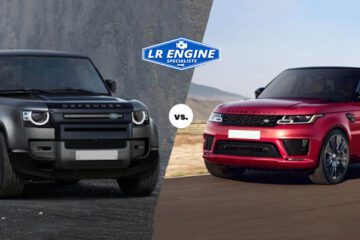Introduction:
While discussing Land Rover Freelander 2 engine mods, one of the most important decisions involves whether you’re working with a petrol or diesel variant. Although both versions of this luxury compact SUV offer impressive performance and off-road capability, their engines differ in architecture, power delivery, tuning potential, and long-term reliability. To make the most of the modification journey, it’s necessary to understand how to optimise each engine type for performance, economy, and durability.
The Freelander 2 came with several engine options, but enthusiasts tend to focus on two core variants: the 2.2L diesel engine and the 3.2L petrol I6 engine. Each has a specific tuning landscape, and knowing what works exceptionally well can determine the success of your modding strategy.
Understanding the 2.2L Diesel Freelander 2 Engine
The 2.2L turbo-diesel engine in the Freelander 2 is well-known for its torque-rich performance, reliability, and fuel efficiency. From the factory, it generates a modest 150–190 bhp, depending on the year and distinct model variant. While these numbers may not scream performance, they offer enough headroom for tuning.
The basic diesel Land Rover Freelander 2 engine mods lie in software tuning, intake upgrades, and turbo improvements. Diesel engines respond especially well to remapping due to the flexibility of their fuel delivery systems. A quality Stage 1 remap alone can enhance horsepower by up to 30%, along with notable gains in torque. This increased low-end pull boost drivability, towing capability, and off-road traction.
Cold air intakes and performance intercoolers are other vital areas of improvement. By reducing intake temperatures and enhancing airflow, the engine can breathe more efficiently, minimising lag and maximising throttle response. The exhaust system also plays a critical role. Swapping out the restrictive OEM exhaust for a high-flow system can further unlock horsepower and elevate turbo spool time.
Where diesel engines excel is in torque delivery and fuel economy, and tuning should reflect this. Diesel tuning isn’t about top horsepower figures, it’s about boosting usable power, throttle smoothness, and maintaining long-term reliability under load. Performance diesel tuning specialists often choose conservative remaps, emphasising torque curves rather than just chasing peak numbers.
Exploring the 3.2L Petrol Freelander 2 Engine
The petrol variant of the Freelander 2 utilises the naturally aspirated 3.2L I6 engine, a powerplant known for its comfort and rev-happy nature. With a stock output of around 230 bhp, it provides a more dynamic drive compared to its diesel sibling but lacks the same low-end grunt.
While exploring petrol Land Rover Freelander 2 engine mods, forced induction becomes an appealing upgrade. Since the engine is naturally aspirated, adding a supercharger or turbocharger can change its character. These upgrades, while high priced, offer dramatic enhancements in power output, often pushing the engine well past 300 bhp with the right supporting mods.
Performance exhaust systems, intake manifolds, and ECU tuning all contribute to maximising airflow and throttle response. ECU tuning in petrol engines is normally more complex due to emissions and knock sensitivity, but the gains can be substantial when done perfectly. A remap designed for 98-octane fuel, for example, can enable more aggressive ignition timing and better throttle mapping.
Another often dominated mod is camshaft upgrades. The naturally aspirated design of the 3.2L petrol engine means that enhancing valve timing and lift can result in significant high-rpm power gains. However, these mods need precise tuning and are ideally performed in conjunction with other performance parts such as free-flowing exhaust headers and upgraded fuel injectors.
Where petrol mods truly excel is engine responsiveness and top-end power. Fuel efficiency may not top the list, but it’s a trade-off for exhilarating throttle response, brisk acceleration, and smooth power across the RPM band. Enthusiasts aiming for a track-day design or high-speed touring experience often gravitate toward the petrol Freelander for its superior revving characteristics.
Reliability Considerations Between Diesel and Petrol Motors
Every engine modification has its advantages and disadvantages; knowing the mechanical boundaries of each Freelander 2 engine variant is essential for lasting performance.
Diesel engines, particularly the 2.2L variant, are potent but sensitive to over-fueling and excessive boost. Running aggressive tunes without upgrading the turbo, intercooler, or clutch can result in premature wear or failure. Diesel particulate filters (DPFs) are another common point of worry. While deleting the DPF can free up power and prevent blocking issues, it may violate emissions regulations and should be approached gradually.
Petrol engines, meanwhile, are generally more tolerant of high RPMs but less forgiving when detonation or lean mixtures occur. This makes tuning accuracy and fuel quality even more vital. Forced induction setups need upgraded pistons, conrods, and cooling systems if you’re aiming for long-term durability at higher boost levels.
Routine oil changes, upgraded fuel pumps, and meticulous maintenance become non-negotiable when increasing power impressively. Cooling is another shared problem. Both engines benefit from larger radiators or auxiliary oil coolers, particularly when operating in hot climates or under heavy load.
Cost Efficiency and Mod Path for Each Engine
From a budget point of view, diesel mods offer more value for the investment. A Stage 1 remap, upgraded intercooler, and free-flow exhaust can yield notable torque gains with minimal investment. Diesel tuning is also less likely to need costly internals unless pursuing extreme horsepower goals.
Petrol mods, particularly those involving forced induction, can become expensive very quickly. Supercharger kits, standalone ECUs, and supporting mods often run into the thousands, making them more appropriate for passionate enthusiasts or custom builders. However, the performance gains in terms of responsiveness and acceleration are far more noticeable than with diesel mods.
Insurance and fuel costs also differ. Modified diesel engines tend to balance better fuel economy, which is the main consideration for daily drivers. Petrol mods, meanwhile, may demand high-quality fuel and see reduced mpg, particularly under aggressive driving conditions.
Off-Roading and Terrain Tuning: Diesel vs Petrol
For those looking to improve off-road performance, diesel models have a clear edge. The low-end torque offered by diesel tuning is exemplary for crawling, towing, and climbing, particularly when paired with a recalibrated throttle map and traction control systems. Mods emphasised low-RPM response and heat management, giving diesel engines a reliable benefit in the toughest environments.
Petrol mods can enhance high-speed dirt or sand driving, where throttle responsiveness and top-end power are more important than low-end grunt. However, they may struggle with heat management during prolonged off-road sessions, making cooling upgrades necessary.
Tuning should show your terrain of choice. Urban drivers might give value to the zippy, rev-happy petrol setup, while rural or mountainous drivers will benefit more from the diesel engine’s linear power delivery and lower fuel consumption.
ECU Remapping: A Must-Have Mod for Both Engines
Perhaps the single most effective modification for both diesel and petrol Freelander 2 engines is ECU remapping. This digital reprogramming changes air-fuel ratios, ignition timing, throttle response, and boost control. For diesels, it enhances turbo efficiency and torque delivery. For petrols, it unlocks higher rev limits, better ignition maps, and even launch control in some cases.
However, choosing a reliable tuner is non-negotiable. Poorly calibrated remaps can damage the engine, trigger limp mode, or even void warranties. A good tune, meanwhile, can harmonise all your mods into a durable and cohesive performance package.
Exhaust Systems: Sound, Flow, and Power
An upgraded exhaust is the main part of any Land Rover Freelander 2 engine mod project. For diesel engines, a performance exhaust lessens back pressure and supports better turbo flow. While it may not drastically change sound, it enhances drivability and fuel efficiency.
Petrol exhaust systems, specifically those with headers and straight-through mufflers, notably alter the vehicle’s tone. Expect a deeper growl and more aggressive tone, which is exemplary for those wanting audible feedback from their performance mods.
Both engine types benefit from stainless steel construction and mandrel bends, which resist corrosion and enhance gas flow. Exhaust mods are best coupled with intake and remap upgrades to fully capitalise on performance gains.
Which Engine to Choose for Mods?
The exemplary Freelander 2 for engine mods relies on your goals. If you give value to torque, economy, and off-road capability, the diesel engine is the superior choice. It offers reliable, affordable tuning with tangible, daily-driving benefits.
If your aim is high-revving performance, responsive throttle, and a sportier drive, the petrol i6 engine offers far more performance potential, albeit at a higher cost. Forced induction, cam upgrades, and bespoke tuning can change it into a powerful touring or street machine.
Ultimately, Land Rover Freelander 2 engine mods should show how to use the vehicle. Even if towing, commuting, off-roading, or spirited driving, each engine has a modification path that maximises its strengths and respects its limits.
Conclusion
Modifying the Land Rover Freelander 2 can be a deeply rewarding experience if done correctly. Whether you select the diesel or petrol variant, understanding each engine’s characteristics and tuning paths guarantees long-term reliability and performance satisfaction. While the diesel shines in torque and practicality, the petrol excels with high-rev power and tuning flexibility. The budget, driving needs, and performance goals should guide your modification strategy.
For expert guidance, tuning, and engine upgrade services designed for your Freelander 2, trust the specialists at Range Rover Engine Specialists—your choice of source for precision performance enhancements.
FAQs:
Which Freelander 2 engine is easier to tune, diesel or petrol?
The diesel 2.2L engine is easier and more affordable to tune with remaps and bolt-ons. The petrol 3.2L needs more investment for major power gains.
Can you turbocharge the petrol Freelander 2 engine?
Yes, but it needs a custom kit, upgraded internals, and ECU tuning. It’s an expensive, high-reward modification.
Is ECU remapping safe for both diesel and petrol engines?
Yes, if done by a reliable tuner using proper software. Poor remaps can damage the engine or reduce durability.
What mods improve off-road capability in the diesel Freelander 2?
Torque-focused remaps, upgraded intercoolers, and throttle response tuning enhance traction and crawling ability.
Do engine mods affect fuel economy?
Diesel mods often boost fuel economy with better torque efficiency. Petrol mods, particularly forced induction, usually reduce it.


